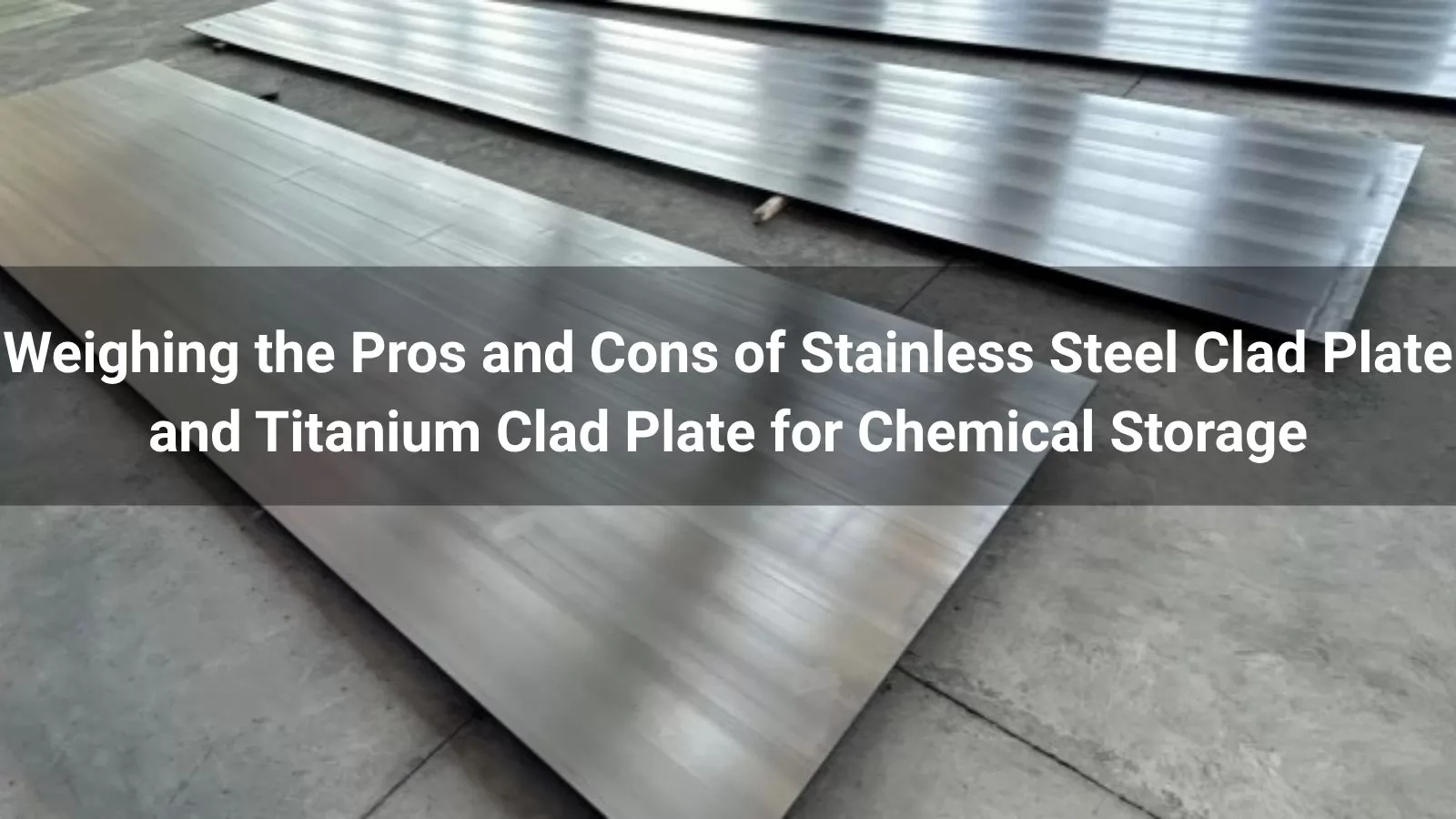
Chemical storage vessels require materials that can withstand harsh environments, including corrosive substances, high temperatures, and varying pressures. Clad plates, which combine a base metal with a layer of corrosion-resistant material, are often used in such applications. Two popular options are stainless steel clad plates and titanium clad plates. This article evaluates the pros and cons of each material to help guide decision-making for chemical storage applications.
Stainless Steel Clad Plate
Pros
-
Cost-Effectiveness: Stainless steel clad plates are generally more affordable than titanium clad plates. The base metal, often carbon steel, is less expensive, and the stainless steel cladding provides corrosion resistance at a lower cost than titanium.
-
Corrosion Resistance: Stainless steel offers excellent resistance to a wide range of chemicals, including many acids, alkalis, and salts, making it suitable for various chemical storage needs.
-
Availability and Fabrication: Stainless steel is widely available, and clad plates can be easily fabricated into tanks, vessels, or other structures. The material is compatible with standard welding and forming techniques.
-
Durability: Stainless steel clad plates are robust and can handle mechanical stresses, making them suitable for large-scale storage vessels that require structural integrity.
-
Versatility: Available in various grades (e.g., 304, 316), stainless steel clad plates can be tailored to specific chemical environments, offering flexibility for different applications.
Cons
-
Limited Resistance to Highly Corrosive Chemicals: While stainless steel performs well in many environments, it is less effective against highly corrosive substances like strong acids (e.g., hydrochloric acid) or chloride-rich environments, which can lead to pitting or crevice corrosion.
-
Weight: Stainless steel clad plates are heavier than titanium alternatives, which may increase transportation and installation costs, especially for large vessels.
-
Temperature Limitations: Stainless steel may not perform well in extremely high-temperature environments, where it can lose strength or become susceptible to stress corrosion cracking.
Titanium Clad Plate
Pros
-
Superior Corrosion Resistance: Titanium is renowned for its exceptional resistance to corrosion, particularly in aggressive environments involving chlorides, strong acids, and seawater. This makes titanium clad plates ideal for storing highly corrosive chemicals.
-
Lightweight: Titanium is significantly lighter than stainless steel, reducing the weight of storage vessels and potentially lowering transportation and structural support costs.
-
High-Temperature Performance: Titanium maintains its strength and corrosion resistance at elevated temperatures, making it suitable for chemical processes involving heat.
-
Longevity: Titanium’s durability and resistance to degradation ensure a longer service life, reducing maintenance and replacement costs over time.
-
Biocompatibility: For applications involving chemicals used in pharmaceuticals or food-grade processes, titanium’s non-toxic and biocompatible nature is an advantage.
Cons
-
High Cost: Titanium clad plates are significantly more expensive than stainless steel clad plates due to the high cost of titanium and the complex manufacturing processes involved in cladding.
-
Limited Availability: Titanium is less commonly used than stainless steel, which can lead to longer lead times for sourcing and higher costs for custom fabrication.
-
Fabrication Challenges: Titanium requires specialized welding techniques and equipment, which can increase fabrication costs and require skilled labor.
-
Lower Mechanical Strength: While titanium is strong for its weight, it has lower mechanical strength compared to stainless steel, which may necessitate thicker base materials for structural integrity in high-pressure applications.
Comparison and Considerations
When choosing between stainless steel and titanium clad plates for chemical storage, several factors must be considered:
-
Chemical Environment: If the storage involves highly corrosive substances like hydrochloric acid or chloride-rich solutions, titanium clad plates are the better choice due to their superior corrosion resistance. For less aggressive chemicals, stainless steel clad plates may suffice.
-
Budget: Stainless steel clad plates are more cost-effective, making them suitable for projects with budget constraints. Titanium, while more expensive, may offer long-term savings due to its durability and lower maintenance needs.
-
Weight and Design: For applications where weight is a concern, such as mobile or modular storage units, titanium’s lightweight nature is advantageous. Stainless steel may be preferred for stationary, large-scale vessels where weight is less critical.
-
Operating Conditions: High-temperature or high-pressure environments may favor titanium due to its ability to maintain performance under extreme conditions. Stainless steel is better suited for moderate conditions.
-
Fabrication and Lead Time: Stainless steel’s widespread availability and ease of fabrication make it a practical choice for projects with tight timelines. Titanium’s specialized requirements may extend project schedules.
Conclusion
Both stainless steel and titanium clad plates offer distinct advantages for chemical storage applications. Stainless steel clad plates are a cost-effective, versatile option suitable for a wide range of chemicals and standard operating conditions. Titanium clad plates, while more expensive, provide unmatched corrosion resistance and performance in extreme environments, making them ideal for highly corrosive or high-temperature applications. The choice ultimately depends on the specific chemical storage requirements, budget, and operational constraints. For further information on high-quality clad plates and expert guidance, visit https://www.fugo-tech.com/clad-plate/.





